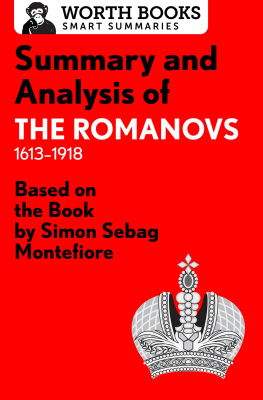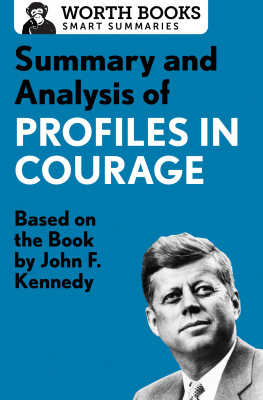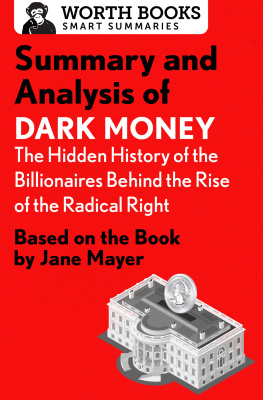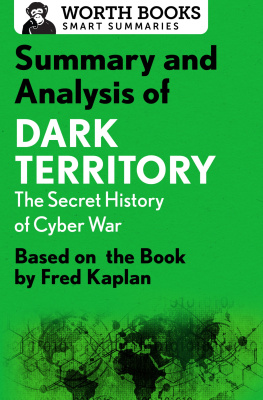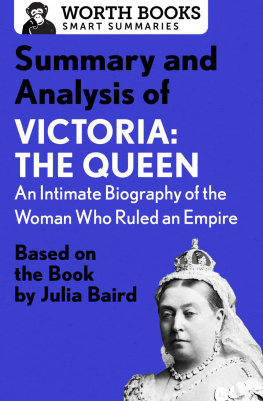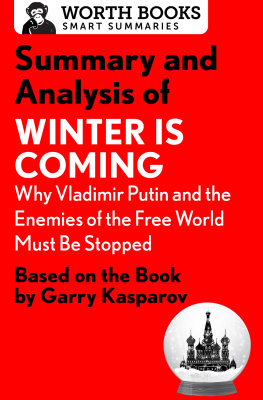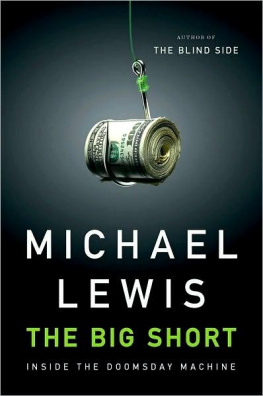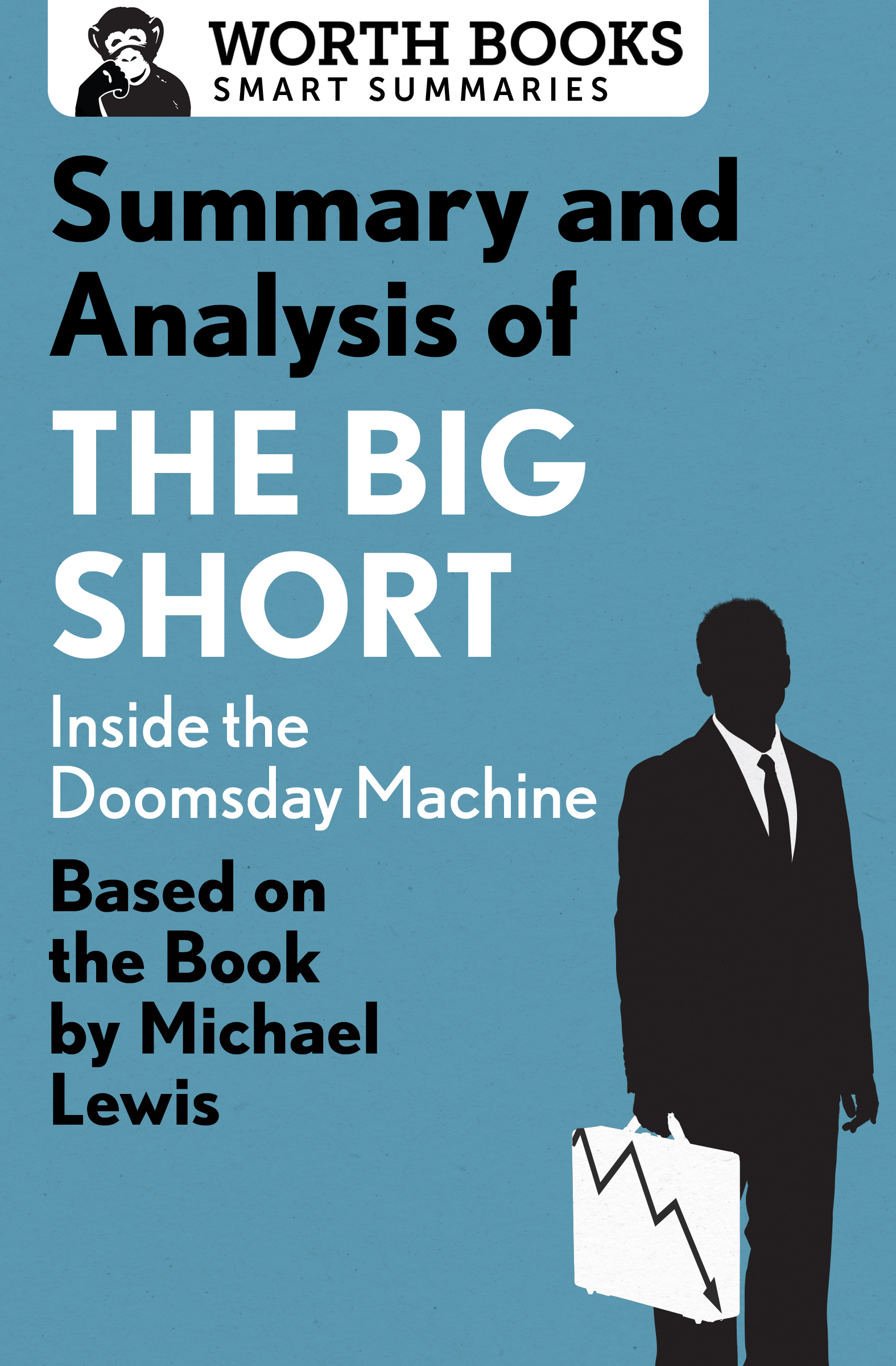Summary and Analysis of
The Big Short
Inside the Doomsday Machine
Based on the Book by Michael Lewis

Contents
Context
The 2008 financial debacle, otherwise known as the Great Recession, was the worst financial crisis the United States had faced since the Great Depression of the 1930s. Over 7 million jobs were lost in the United States. Home prices fell, diminishing the wealth of homeowners. In 2010, there were 157 bank failures. What actually happened?
Michael Lewis, the author of The Big Short: Insidethe Doomsday Machine , has written several books, including one on WallStreet called Liars Poker . He became intrigued with the Great Recession andfollowed the losses that big Wall Street firms incurred during the latter part of2007. He was curious to find out who was on the other side of those losses. As Lewisbegan writing The Big Short , he discovered the storiesof individual investors who suspected something was wrong in the subprime mortgagemarket and chose to go the opposite waybetting against the market and the big WallStreet firms. They were champions during the recession, winning big while the marketplummeted.
The Big Short was made into a critically acclaimed film in 2015, which brought the story of the heroes and villains of the 2008 financial crisis to a wider audience.
Overview
Michael Lewiss The Big Short is about Wall Street, which is a financial fraternity of sorts. Depending on ones ambitions, you either love Wall Street or you hate it. The Big Short offers insight into the main playerssome villains, some heroeswhose actions ultimately led to the financial free fall of 2008. Delivered with the suspense of a Vegas-style craps game, The Big Short zeroes in on the bond market, a do-as-you-please arena for traders and a huge moneymaker for institutions large and small. It takes readers behind closed doors to the fraudulent activities that led to the biggest financial debacle since the stock market crash of 1929.
With The Big Short , one learns about the speculators who were so mesmerized by the dangling carrot (in this case, large fortunes) that they overlooked the potential pitfalls associated with subprime mortgage bonds and the collateralized debt obligations (CDOs) that encapsulated them. Lewiss book is also a biography of those who saw the misdeeds of some and chose to short the subprime mortgage bond market as a result.
Wall Street is not for the faint of heart; it is for the opportunists and the risk takers. There will always be winners and losers. In the first decade of the twenty-first century, there was an almost laissez-faire attitude about how Wall Street firms gambled, and by smaller mortgage lenders who had few qualms about saddling borrowers with teaser rates. Some borrowers would be fooled by the lure of low interest rates, and many would default and crumble. There were the rating agencies, Moodys and Standard & Poors (S&P), who assisted Wall Street firms in pushing subprime mortgage bonds as triple-A-rated when, in fact, they were mostly triple-B-rated high-risk investments. The Big short is not an absolution of those borrowers who knew they couldnt swing a six-figure mortgage but signed on the dotted line anyway. It all comes back to the lender who was looking for the next chump to say to them, Lets make a deal!
There were some men, such as Dr. Michael Burry, Greg Lippmann, and Steve Eisman, whose disdain for what was going on would lead to the dismantling of a fortress built by greed, power, and, perhaps more than anything, the illusion of invincibility. The hubris of just a few insiders led many others on Wall Street to the brink of disaster.
Summary
Chapter One: A Secret Origin Story
It had to be in his blood. Both of his parents had worked for years as brokers at Oppenheimer, the esteemed financial services firm. They urged him to join them. Steve Eisman surely felt the desire to get into the financial sector, too. He eventually did, but only after graduating from Harvard Law School and realizing that being a lawyer wasnt what it was cracked up to be. Eisman was outspoken with little desire to be like everyone else. He didnt seek consensus from those in the room before expressing his point of view, and was known to speak out of turn. Such brashness would make some of those around him cringe, but it would be welcomed by those he championed and a few associates in the years to come as the subprime mortgage debacle started to overheat.
Eismans first foray in the subprime mortgage industry would come during his days as an attorney representing the Money Store, which was active in the subprime mortgage market in the 1990s. Management at Oppenheimer viewed this as good experience, using it to propel him to lead analyst covering Ames Financial, a subprime mortgage lender. And along the way, he became something of a Pied Piper, a surrogate for those he knew were being misled.
Wall Streets initial interest in subprime mortgage lending had started at least two decades before the Great Recession, which ran from December 2007 to June 2009. Those in the bond industry began speculating on the rate that solvent Americans would repay their mortgage through refinancing. Wall Street was wading into waters it hadnt treaded before: Americans ability to pay their debt, in this case, home loans.
Need to Know: The subprime mortgage market evolved astonishingly fast. In the 1980s, the quality of loans underpinning a mortgage bond was good because standards for the loans were being met. The 1990s ushered in a new era of subprime mortgage lenders, poorer quality of loans, and second mortgages.
Chapter Two: In the Land of the Blind
In 2004, Michael Burry, a neurologist turned hedge fund manager, decided to get into the bond market. He was especially interested in subprime mortgage bonds. He knew about the towersthe stacking or bundling of home mortgage loans. There were the designated top and bottom floors that investors could get in. Top floors were low risk and low return, but you saw profits quickly; bottom floors were high risk and potentially high return, but they took longer to pay off. Top floors housed bundled loans, or bonds, that rating agencies Moodys and S&P labeled triple-A (the highest possible rating). Burry didnt want either of these. His focus was on shorting or borrowing and betting against the subprime mortgage bonds.
Burry began earnestly reading mortgage bond prospectusesan activity few investors would have the patience forand soon saw a trend developing in the subprime mortgage industry. Within a matter of months in 2004, the number of adjustable rate mortgages (ARMs) in a pool of loans increased from 5.85% to 17.48%. How could this be, he wondered, when other categories like the FICO scores and percent of no-documentation (no-doc) loan-to-value measures remained unchanged? With the increase of ARMs, one would expect to see higher FICO scores and lower loan-to-value measures. However, what Burry saw was a higher rate of interest-only mortgages leading him to believe that the quality of loans wrapped up and bundled for investors was substandard.
Burry wondered how standards set for home loans could be compromised, not just by the lender but by the borrower as well. Within a two-year timeframe, between 2003 and 2005, restraint had become an obsolete word for both lenders and borrowers.
There was a way for Burry to capitalize on this market, as he had come across credit default swaps (CDS) a couple of years earlier. CDS is a misnomer of sorts as there were no actual swaps of any kind. At the time these were, essentially, insurance policies on corporate bonds. Burry was concerned about the real estate market and the potential for a free fall, given the lower standards by which lenders were doling out home loans. He suspected that there was trouble ahead for players including the lenders, insurers, and firms that owned subprime mortgage bonds. Constantly educating himself on finance issues, he began studying credit derivatives, which led him to the idea of applying CDS to the subprime mortgage bonds. He believed there was cause for concern regarding the quality of subprime mortgage loans made in 2005: Most of them, he felt, would go bad. But it was a timing issue.


